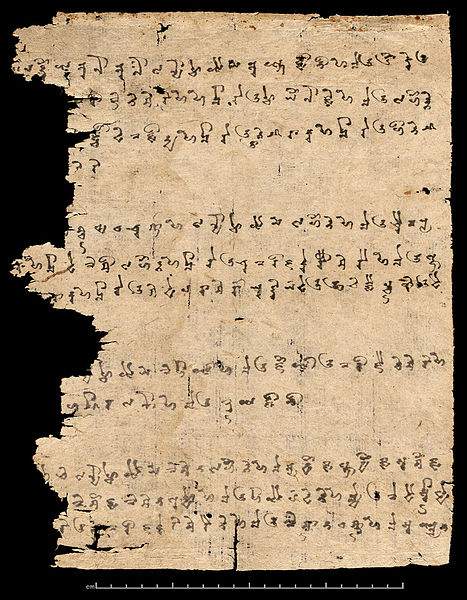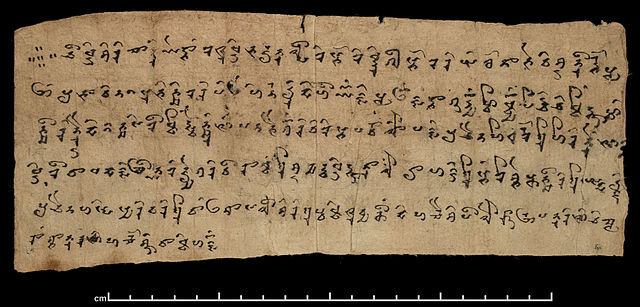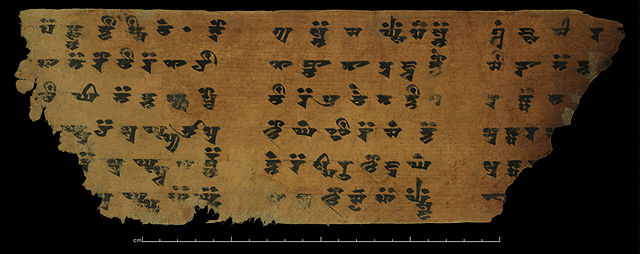
| SAKA LANGUAGE Saka, Khotanese, Tumshuqese :
Native
to : Kingdom of Khotan, Tumshuq, Murtuq and Shule Kingdom
• Indo-Iranian
Dialects : Khotanese and Tumshuqese
Writing system : Brahmi and Kharosthi
Saka or Sakan, was a variety of Eastern Iranian languages, attested from the ancient Buddhist kingdoms of Khotan, Kashgar and Tumshuq in the Tarim Basin, in what is now Southern Xinjiang, China. It is a Middle Iranian language. The two kingdoms differed in dialect, their speech known as Khotanese and Tumshuqese.
Documents on wood and paper were written in modified Brahmi script with the addition of extra characters over time and unusual conjuncts such as ys for z. The documents date from the fourth to the eleventh century. Tumshuqese was more archaic than Khotanese, but it is much less understood because it appears in fewer manuscripts compared to Khotanese. Both dialects share features with modern Pashto and Wakhi. The language was known as "Hvatanai" in contemporary documents. Many Prakrit terms were borrowed from Khotanese into the Tocharian languages.
History
:
The Saka language became extinct after invading Turkic Muslims conquered the Kingdom of Khotan in the Islamicisation and Turkicisation of Xinjiang.
In the 11th century, it was remarked by Mahmud al-Kashgari that the people of Khotan still had their own language and script and did not know Turkic well. According to Kashgari some non-Turkic languages like the Kanchaki and Sogdian were still used in some areas. It is believed that the Saka language group was what Kanchaki belonged to. It is believed that the Tarim Basin became linguistically Turkified by the end of the 11th century.
Classification
:
Texts :
Khotanese animal zodiac BLI6 OR11252 1R2 1
Khotanese Verses BLE4 IOLKHOT50 4R1 1
Book of Zambasta BLX3542 OR9614 5R1 1
Manuscript in Khotanese from Dandan Oilik, NE of Khotan. Now held in the British Library Other than an inscription from Issyk kurgan that it is tentatively identified as Khotanese (although written in Kharosthi), all of the surviving documents originate from Khotan or Tumshuq. Khotanese is attested from over 2,300 texts preserved among the Dunhuang manuscripts, as opposed to just 15 texts in Tumshuqese. These were deciphered by Harold Walter Bailey. The earliest texts, from the fourth century, are mostly religious documents. There were several vihars in the Kingdom of Khotan and Buddhist translations are common at all periods of the documents. There are many reports to the royal court (called hasda aurasa) which are of historical importance, as well as private documents. An example of a document is Or.6400/2.3
Source :
https://en.wikipedia.org/ |



